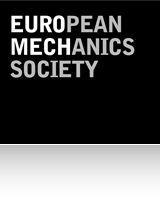597 – Reduced Order Modeling in Mechanics of Materials
Chairperson:
Prof. Felix Fritzen
EMMA - Efficient Methods for Mechanical Analysis
Institute of Applied Mechanics (CE)
University of Stuttgart
Germany
email: felix.fritzen@mechbau.uni-stuttgart.de
Co-chairperson
David Ryckelynck
Centre des Matériaux
Mines ParisTech
Paris, France
email: David.Ryckelynck@mines-paristech.fr
The development of in-situ experiments involving field measurements on heterogeneous materials and the development of multi-physical coupling in material science have advanced rapidly in recent years.In order to run related parametric analyses (e.g. to better understand the effect of uncertain material parameters), to perform data mining for model calibration or to run multiscale simulations the demand for computational resources grows steadily. The growth of existing computing capacities alone is not sufficient to satisfy these needs. Thereby, the advancement of more complex experiments in material science and the computational lifetime assessment of microheterogeneous structures is prevented. In order to satisfy modern demands with respect to computational performance, point model order reduction (MOR) methods can be a viable option. Their development has excelled in the past two decades, leading to methods for speeding up numerical simulations in mechanics, physics, applied mathematics and general simulation sciences. In the field of multiscale material modeling MOR has proven to be particularly powerful: while the microstructural geometry can often be considered constant the load and material parameters change. This parameterized problem setting often allows for a massive reduction of the fine scale information. Due to this, reduced order models (ROM) permit to tackle two challenges at once: storage requirements and computing times are lowered simultaneously at the expense of a (often rather small) loss in accuracy. Therefore, ROMs are promising candidates for providing effective/homogenized material models that account for material nonlinearities, multiscale dynamics and for coupled multifield problems in scale-bridging simulations of smart and functional materials. While model order reduction is an active domain of research, the understanding of the limitations and capabilities of ROM for mechanics of materials can – in our view – be improved. Additionally, the influence of data-driven techniques on reduced order modeling is seen as an innovative field of research in which the discussion has just started.
